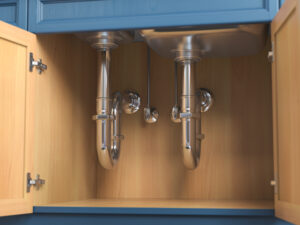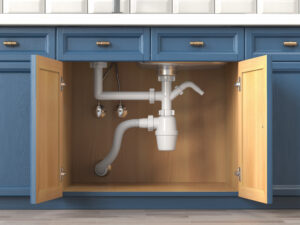
Understanding the Basics of Plumbing Vents
Plumbing vents are a crucial component of any residential or commercial plumbing system. These ventilation pipes serve multiple essential functions, ensuring the proper operation and safety of your plumbing. At their core, plumbing vents are responsible for regulating air pressure within your pipes, which is necessary for the effective and efficient removal of wastewater from your home. Without these vents, your plumbing system would be susceptible to blockages, unpleasant odors, and a host of other issues.
The Functionality of Plumbing Vents
Regulating Air Pressure
One of the primary functions of plumbing vents is to regulate the air pressure within your plumbing system. This regulation is crucial because it allows wastewater to flow smoothly through your pipes. Without proper venting, negative air pressure can build up, causing slow drainage or even complete blockages.
Preventing Sewer Gas Backflow
Plumbing vents play a vital role in preventing sewer gases from entering your home. These gases, which include methane and hydrogen sulfide, are not only foul-smelling but also potentially hazardous to your health. Vents provide a safe escape route for these gases, directing them outside instead of allowing them to seep into your living spaces.
Maintaining Water Seals in Traps
Water traps, or P-traps, are essential components of your plumbing that prevent sewer gases from entering your home. These traps work by holding a small amount of water, which creates a barrier against gases. Proper venting ensures that this water seal is maintained, preventing the traps from drying out and allowing gases to bypass the barrier.
Types of Plumbing Vents
Main Vent Stack
The main vent stack is the primary vent in your plumbing system. It runs vertically from your main sewer line up through your home’s roof. This stack is essential for providing adequate ventilation for the entire plumbing system, ensuring that air can circulate freely and that sewer gases are expelled efficiently.
Branch Vents
Branch vents are secondary vents that connect to the main vent stack. They typically provide additional ventilation for specific sections of your plumbing system, such as bathroom fixtures or kitchen sinks. By connecting to the main stack, branch vents help ensure that air pressure is properly balanced throughout your entire system.
Loop Vents
Loop vents are commonly used in situations where traditional venting methods are impractical, such as in island sinks. These vents create a loop that allows air to enter the system, preventing siphoning and ensuring that wastewater flows smoothly.
Air Admittance Valves (AAVs)
Air Admittance Valves are mechanical devices that allow air into your plumbing system without the need for a vent pipe extending to the roof. These valves open when negative pressure is detected, allowing air to enter and equalize the pressure. AAVs are often used in remodeling projects or in locations where installing a traditional vent is not feasible.
The Importance of Proper Venting
Ensuring Efficient Drainage
Proper venting is essential for ensuring that your plumbing system drains efficiently. Negative pressure can cause slow drainage, gurgling sounds, and even blockages without adequate ventilation. By allowing air to flow freely, vents help maintain the necessary pressure balance, ensuring that wastewater can move through your pipes without obstruction.
Preventing Plumbing Damage
Inadequate venting can lead to significant plumbing damage over time. Negative pressure buildup can cause pipes to crack or joints to separate, leading to leaks and costly repairs. Properly installed vents help prevent these issues by maintaining the structural integrity of your plumbing system.
Enhancing Health and Safety
As mentioned earlier, plumbing vents play a crucial role in preventing sewer gases from entering your home. These gases can pose serious health risks, including respiratory problems and exposure to toxic substances. By ensuring that your plumbing system is properly vented, you can protect the health and safety of your household.
Common Issues with Plumbing Vents
Blocked Vents
One of the most common issues with plumbing vents is blockages. Debris, bird nests, and other obstructions can clog vent pipes, preventing air from flowing freely. Blocked vents can lead to slow drainage, gurgling sounds, and unpleasant odors. Regular inspections and maintenance are essential for keeping your vents clear and functional.
Improper Installation
Improperly installed vents can cause a variety of problems, including inadequate air flow and sewer gas entry. It’s crucial to ensure that your vents are installed according to local plumbing codes and industry best practices. Hiring a professional plumber to install or inspect your venting system can help prevent installation-related issues.
Aging Vent Pipes
Over time, vent pipes can deteriorate due to corrosion, weather exposure, and other factors. Aging pipes may develop leaks or cracks, reducing their effectiveness. Regular inspections can help identify and address aging vent pipes before they cause significant problems.

Installing and Maintaining Plumbing Vents
Installation Guidelines
- Follow Local Plumbing Codes
- Compliance with local plumbing codes is essential for ensuring that your venting system is safe and effective. These codes provide guidelines on vent placement, pipe materials, and installation practices.
- Proper Placement
- Vents should be strategically placed to provide adequate ventilation for your entire plumbing system. The main vent stack should extend through the roof, while branch vents should connect to the main stack at appropriate intervals.
- Use Quality Materials
- Using high-quality, corrosion-resistant materials for your vent pipes can help ensure their longevity and reliability. PVC and ABS are commonly used materials for vent pipes due to their durability and resistance to corrosion.
Maintenance Tips
- Regular Inspections
- Conducting regular inspections of your venting system can help identify and address potential issues before they become serious problems. Look for signs of blockages, leaks, or corrosion.
- Clear Obstructions
- Remove any debris, bird nests, or other obstructions that may be blocking your vent pipes. Keeping your vents clear is essential for maintaining proper air flow and preventing negative pressure buildup.
- Repair Leaks Promptly
- If you detect any leaks or cracks in your vent pipes, repair them promptly to prevent further damage. Small leaks can quickly escalate into more significant problems if left unaddressed.
- Professional Maintenance
- Consider hiring a professional plumber to perform regular maintenance on your venting system. A professional can provide thorough inspections and expert repairs, ensuring that your system remains in optimal condition.
Conclusion
Plumbing vents are an essential component of any functional plumbing system. Vents ensure that your plumbing operates efficiently and safely by regulating air pressure, preventing sewer gas backflow, and maintaining water seals in traps. Understanding the different types of vents, their functions, and the importance of proper installation and maintenance can help you keep your plumbing system in top condition. Regular inspections and adherence to local plumbing Sydney codes are key to preventing issues and prolonging the lifespan of your plumbing vents.
